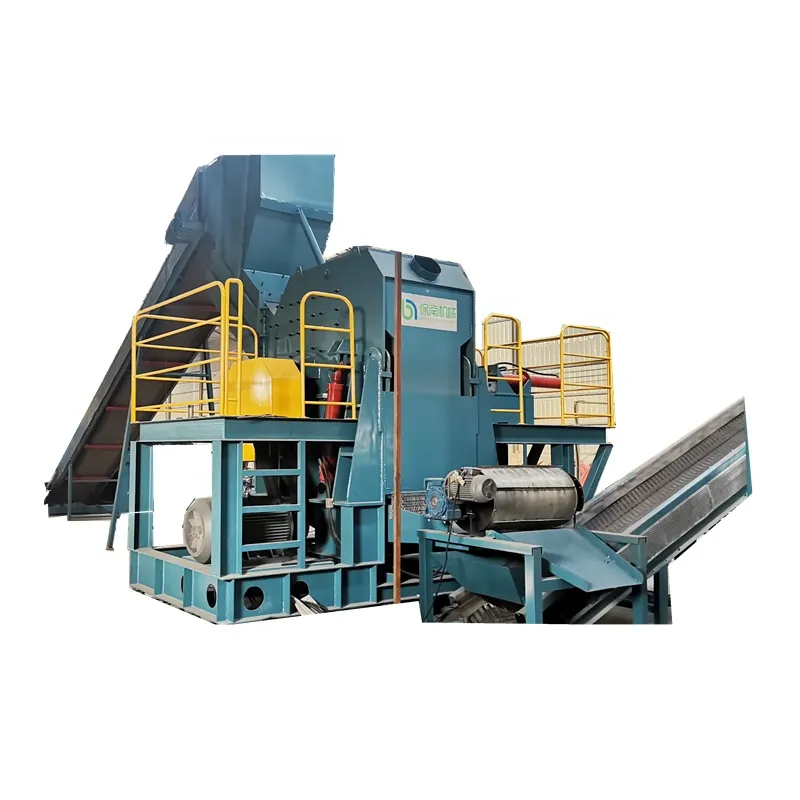

kol . 20, 2024 21:36 Back to list
Understanding Non-Ferrous Metal Separators An Essential Tool in Recycling
In the world of recycling, the separation of materials plays a crucial role in ensuring that valuable resources are recovered and reused. Among the various types of materials, non-ferrous metals such as aluminum, copper, lead, and zinc hold significant value due to their unique properties and potential applications. To efficiently separate these metals from mixed waste streams, non-ferrous metal separators have become an essential tool in the recycling industry.
Understanding Non-Ferrous Metal Separators An Essential Tool in Recycling
Eddy current separation is one of the most widely used techniques for non-ferrous metal separation. This method utilizes an alternating magnetic field to induce electrical currents (eddy currents) in conductive non-ferrous metals. When non-ferrous materials pass through the magnetic field, these eddy currents create a secondary magnetic field that repels the metals away from the non-metallic waste. This process enables the efficient separation of non-ferrous metals from mixed recyclables, ensuring that they can be collected and processed further.

Another effective method for separating non-ferrous metals is air classification. This technique employs a stream of air to differentiate materials based on their density. Heavier materials fall to the bottom, while lighter non-ferrous metals are lifted by the air stream and collected separately. Air classification can be particularly useful in pre-sorting processes, helping to streamline the recycling operation and reduce contamination of the output product.
In recent years, advancements in sensor-based sorting technology have revolutionized the way non-ferrous metals are separated. This method relies on cameras and sensors to identify materials based on their color, shape, size, and optical properties. By using sophisticated algorithms, these machines can differentiate between various types of non-ferrous metals and sort them with high precision. This not only increases the efficiency of the recycling process but also enhances the quality of the final output, as pure metal streams can be generated for reprocessing.
The importance of non-ferrous metal separators in the recycling industry cannot be overstated. As the demand for recycled materials continues to rise due to environmental concerns and the finite nature of raw resources, effective and efficient separation systems become imperative. By enabling the reclamation of valuable non-ferrous metals from waste, these separators contribute to a circular economy where resources are reused, reducing the need for mining and minimizing the environmental impact of extraction processes.
In conclusion, non-ferrous metal separators are a vital component of modern recycling operations. Through methods like eddy current separation, air classification, and sensor-based sorting, these systems enhance the recovery of valuable metals and promote sustainable practices within the industry. As technology continues to evolve, the capabilities of non-ferrous metal separators will undoubtedly improve, paving the way for even more efficient recycling processes and a more sustainable future. The effective management of non-ferrous metals plays a key role in conserving resources and protecting the environment, making these separators indispensable in our quest for a more sustainable world.
Latest news
Troubleshooting Common Eddy Separator Problems
NewsJul.04,2025
The Role of Metal Recycling Plants in Circular Economy
NewsJul.04,2025
The Impact of Recycling Line Pickers on Waste Management Costs
NewsJul.04,2025
Safety Features Every Metal Shredder Should Have
NewsJul.04,2025
How Industrial Shredders Improve Waste Management Systems
NewsJul.04,2025
How Cable Granulators Contribute to Sustainable Recycling
NewsJul.04,2025